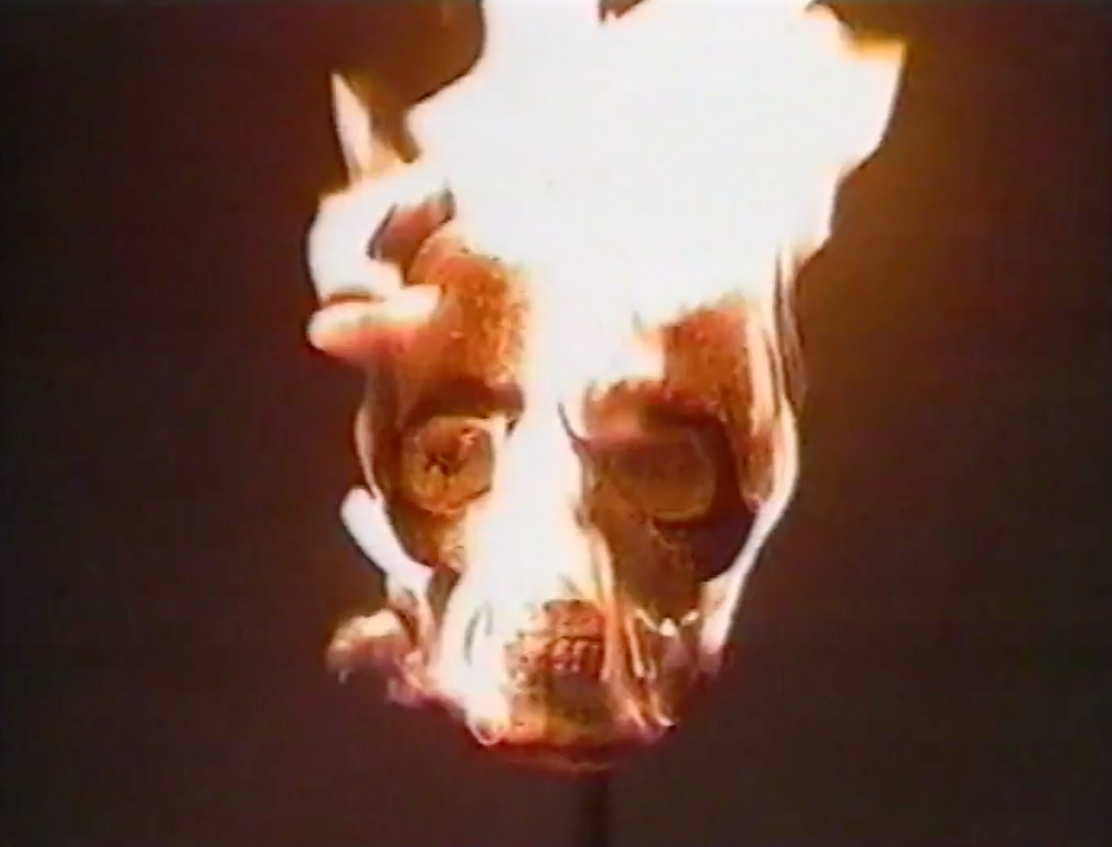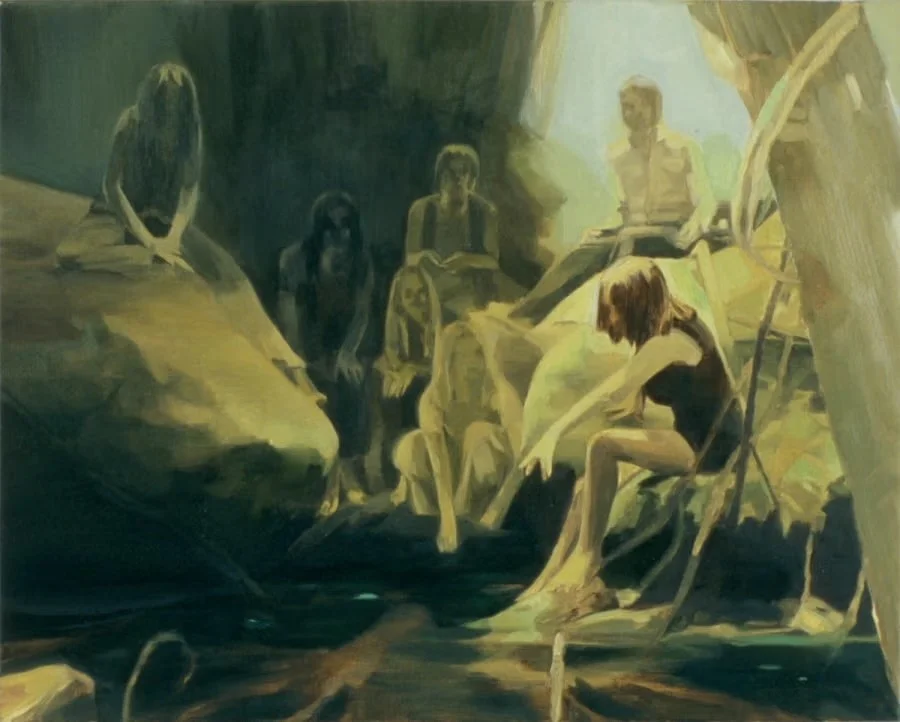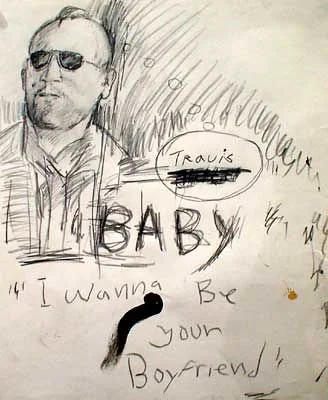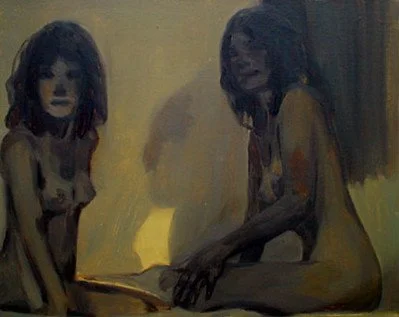
We all love ...
We all love …
curated by Alun Rowlands and Matt Williams, The Mission, London
in conjunction with Electric Stew, The Great Eastern Hotel
We invented something. It became a daily part of the community's life. Each evening the group would gather. We would sit together in a big circle. Someone, anyone, could begin by going into the middle of this circle. Doing just about anything. There was one condition to 'anything'. It was not possible or allowed for the person in the middle to hurt anyone. You could murder someone in the middle, but it must be in the form of fiction, of acting out the feelings of murder. You couldn't bring objects into the middle. You could create them from imagination or convince everyone the object is real, that it really exists. You could shoot people in the middle. We saw plane crashes in the middle. We saw nuclear weapons detonated in the middle. We saw bizarre, comical and horrible sex crimes in the middle. We saw the future, the past, and every personality in history - in the middle. Everyone and everything seems to have made an appearance in the middle. And through this experience the people in the middle saw themselves better. They saw everyone else as human beings like themselves. We saw unbelievable things. Things we couldn't imagine or write about. It was like seeing the ENTIRE universe run before your eyes - like the mother of all films. It was a film you saw, a film you acted in, a film you wrote and edited but never saw the final version. It carried us away and brought us back. You went to heaven and hell. You went up. You went down. You went away. You came back. You were here. It was the trip of all trips. You could spend a few seconds in the middle and it seemed like forever. You could spend the evening in the middle and it was over in seconds. You could do or see other people do things you never imagined that you or they could do. And all the problems you might have would... disappear! - Richard Gardner | Friedrichshof Chronicles
Karen Leo's 24-minute video, Himrod Forever, features the artist wearing a knitted, head-to-toe Bruce Willis costume. A part psychological portrait of Willis, retired action her, occasional agrophobe the character works out, shouts at ice cream trucks, roams around an apartment and finally sprouts a sock puppet from its forehead.
Himrod is Taxi Driver by way of Sesame Street. The fiendishly perverse music track includes tunes by Cher, Willie Nelson and Glen Campbell. The abject and beguiling narrative of Leo's videos stage fandom, aspiration and doppelgängers.
Stephen Cornell
David Thorpe, Celestial Fires, 2002
Kaye Donachie, The Epiphany, 2002, oil on linen 36 × 46 cm
Aïda Ruilova’s video works are defined by their exploration of psychological tension, suspense, and the uncanny, often drawing on the aesthetics and motifs of B horror movies and experimental cinema. Common themes include isolation, fear, vulnerability, and obsessive ritual, frequently presented through terse, non-narrative vignettes featuring lone figures in confined, ambiguous spaces. Ruilova’s use of jarring edits, repetitive soundscapes, and extreme camera angles amplifies a sense of claustrophobia and emotional volatility. Her works incorporate strong references to the macabre, eroticism, and existential unease, blurring the line between reality and nightmare. These recurring themes foster a visceral and immersive experience—where the body, language, and environment become intertwined vessels for personal and collective anxieties. Ultimately, Ruilova’s videos challenge viewers to confront uncomfortable emotions and the limits of subjective experience.
In 1997 Miguel Calderón and Yoshua Okon exhibited a stack of 120 stolen car stereos on the gallery floor of La Panaderia (Mexico City, Mexico). 119 of these stereos were obtained in the second-hand 'stolen' goods market. On the wall behind the sculpture, a looped video projection showed how the artists obtained the 120th stereo by breaking into a car, smashing the window and pulling the stereo out from the dashboard.
A Propósito..., 1996
Video projection (1 min), 120 car stereos, Variable dimensions
Karen Leo, Himrod Forever, 2002, 24 minute video
Being Fucked Up, 2000 by Emily Vey Duke and Cooper Battersby is a raw, uncompromising video work that explores addiction, vulnerability, and fractured identities through live-action and animation. Opening with Duke huffing crack and singing a haunting, disillusioned song, the video blends humour, pain, and surreal imagery to confront self-loathing, desire, and human frailty. The work challenges norms with unfiltered honesty, exposing the complexity of relationships and inner turmoil while questioning notions of redemption and self-worth. Through fragmented vignettes, sharp dialogue, and striking visuals, "Being Fucked Up" is an intense portrait of two artists grappling with chaos and connection in a broken world, pushing boundaries with both confrontation and dark wit.
STEPHEN CORNELL
MIKE DEE
KAYE DONACHIE
DANIEL GUZMAN
CHRIS HANSON & HENDRIKA SONNENBERG
KAREN LEO
YOSHUA OKON
AÏDA RUILOVA
NEIL RUMMING
DAVID THORPE
VEY DUKE & BATTERSBY
SOPHIE VON HELLERMANN
Daniel Guzman
We all love … exhibition image
A Propósito..., 1996
Videoprojection (1 min), 120 car stereos, Variable dimensions
“During the 80s and 90s, having the stereo stolen from your car in Mexico was a very common situation. When I was studying in the 7th and 8th grades, it was a rite of passage to steal one, not out of necessity, but as a way of being accepted by the high school gangs. After a period of dialogue, sparked in the creation of our own art space, La Panaderia, Yoshua talked to me about his interest in researching and documenting people that stole car stereos. In order to understand the driving force that motivated them, apart from the little money they obtained, I thought that it would be a good idea to experience the situation directly from their point of view, through being the perpetrator instead of the victim.
We set to steal the stereo in a rich Mexican neighborhood. In a first ironic attempt, and because of my lack of experience, I hit the glass with a hammer covered in a sock (to lessen the noise) and it bounced right back up at me, so I ran back into our car, where Yoshua was videotaping me.
The second step was to show, along with the video, a wall of stolen car stereos. While we were negotiating them in the black market, a guy pulled a gun on us luckily we survived. Through this we understood how much stolen goods and piracy help to sustain Mexico's economy and how many people actually survive because of this illegal, but thriving, business.”
- Miguel Calderón
Kaye Donachie
Sophie Von Hellermann
We all love… exhibition image
We all love… The Mission, London 2002















